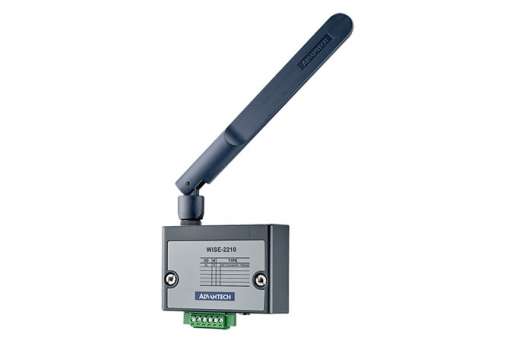Advantech to announce the release of its latest LPWAN wireless self-powered IoT sensor nodes
Advantech, a global leader in IoT sensory technology and embedded computing, is pleased to announce the release of its latest LPWAN wireless, compact size, self-powered IoT sensor nodes: the WISE-2210 CT node and WISE-2211 wireless sensor node. Utilizing low-power, wide-area networks (LPWAN), these latest editions to the WISE series of remote sensors offer both long-distance wireless data transmission and low-power consumption that is ideally suited to energy management, power measurement, and equipment performance analysis.
LPWAN Connectivity and Self-Powered Electricity without Extra Wiring
For large-scale environments, such as factories, warehouses, and heavy industry, WISE-2210 and WISE-2211 supports self-powered electricity and a wireless LPWAN featuring a transmission range of up to 500 meters; offering superior coverage, better penetration, and less signal interference compared to 2.4GHz, without the hassle of complex communication and power wiring. The series has different data acquisition capacities: WISE-2210 performs remote monitoring of machine power current, while the WISE-2211 collects relevant data, such as temperature, humidity, and water pressure levels.
Full CT Integration for Easily Gauging Power Current Levels
The WISE-2210 node offers full, direct integration with current transformers (CT); enabling the machinery power current level to be gauged effortlessly. By deploying Advantech’s accessory CT, users can significantly improve energy management and better analyze the performance of critical equipment.
A Device-to-Cloud Total Solution
WISE-2210/2211 works together with WISE-4210-AP for a total device-to-cloud solution. With Modbus, MQTT, and RESTful web API protocol support, it’s easier and faster to update relevant data to the database, SCADA, or cloud while reducing manpower investment. Transmitting data from the WISE 2210/2211 node to WISE-4210-AP enables simultaneous management of up to 64 nodes—greatly simplifying the management of key infrastructure and minimizing total installation space.

